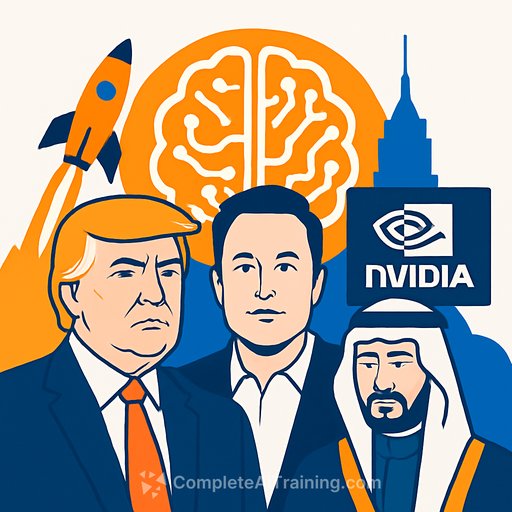Genesis Mission: What a New US AI Push Could Mean for Builders
President Donald Trump is expected to introduce a "Genesis Mission" via executive order to accelerate US artificial intelligence efforts. A Department of Energy official said the initiative is being framed on the scale of the Manhattan Project and the space race, signaling a major federal bet on compute, research, and industry collaboration.
Details are still under wraps. A White House official cautioned that any executive order discussion is speculative until it's formally announced.
What's Likely in Scope
The order would likely direct US national labs to take on more AI work and formalize public-private partnerships. That means more funded projects, faster access to government-grade compute, and tighter alignment between lab research and commercial deployment.
For engineering leaders, expect increased demand for HPC-optimized workloads, model evaluation frameworks, and secure data pipelines that can transfer between federal labs and private environments.
A Federal AI Standard on the Table
Trump called on Congress to pass a federal AI standard-either in the upcoming defense spending bill or as standalone legislation. House leadership is exploring a path to include it in the National Defense Authorization Act, though a similar push was blocked in July over concerns it could undermine efforts on child safety and copyright.
A single "one approval process" was also floated to avoid a patchwork of 50 state rules. If that happens, compliance for model deployment, model cards, and safety audits could consolidate under one federal bar instead of multiple state-level hurdles.
Global Partnerships, Compute, and Export Signals
This week's meetings with Saudi Crown Prince Mohammed bin Salman included commitments to approve advanced AI chip sales to the kingdom. Nvidia and Elon Musk's xAI also announced plans to co-develop a data center with the Saudi-backed Humain venture.
The message: scale up fast, with allies. Nvidia CEO Jensen Huang has argued the US risks losing ground to China without streamlined regulation and decisive investment-an argument echoed in Tuesday's meetings.
National Labs and New Supercomputers
The administration's earlier AI policy blueprint pushed agencies-especially the Department of Energy-to invest in automated, cloud-enabled labs across engineering, materials science, chemistry, biology, and neuroscience. It also called for expanded AI research and training at federal labs in collaboration with industry.
Nvidia recently announced partnerships with the Energy Department to advance AI and quantum research, including seven new supercomputers powered by the company's chips at federal research facilities. For teams building foundation models or domain-specific LLMs, this points to more accessible compute and joint research programs with clear commercialization paths.
Why This Matters for IT and Development Teams
- Compute access: Expect more HPC and accelerator capacity routed through national labs and partner programs.
- Procurement velocity: Public-private partnerships can compress timelines for pilots and proofs of concept that feed into federal workloads.
- Regulatory clarity: A federal standard-if it lands-simplifies risk assessments, audits, and go-to-market across states.
- Global posture: Export policy and ally investments will influence where you deploy, how you shard datasets, and how you plan for latency, sovereignty, and compliance.
What to Watch in the Executive Order Text
- Funding channels: Which agencies manage grants, credits, or procurement for AI research and infrastructure.
- Lab access: Programs that let startups and enterprises use national lab compute, datasets, and evaluation harnesses.
- Safety and IP: Requirements for model evaluations, red-teaming, copyright protections, and reporting.
- Preemption scope: How a federal standard interacts with state-level rules.
- Export controls: Any changes impacting advanced chip availability and cross-border training/inference.
Practical Next Steps
- Prep a compliance baseline: centralize model cards, eval results, incident logs, and data lineage so you can map quickly to a federal standard.
- Design for portability: containerize training/inference to run across on-prem, cloud, and potential lab resources without heavy refactors.
- Line up partnerships: identify academic or lab collaborators for grant proposals and shared compute access.
- Secure the data layer: isolate sensitive datasets, implement RAG governance, and document export-sensitive components.
- Upskill your team: sharpen distributed training, GPU scheduling, quantization, and evaluation skills before capacity opens up.
Sources and Useful Links
US Department of Energy National Laboratories
National Defense Authorization Act (search on Congress.gov)
Level Up Fast
If you need to tighten your team's AI skill stack ahead of federal programs opening up, scan the latest AI courses from Complete AI Training to cover gaps in distributed training, evaluation, and MLOps.
Your membership also unlocks:






